anxiety & aggression support
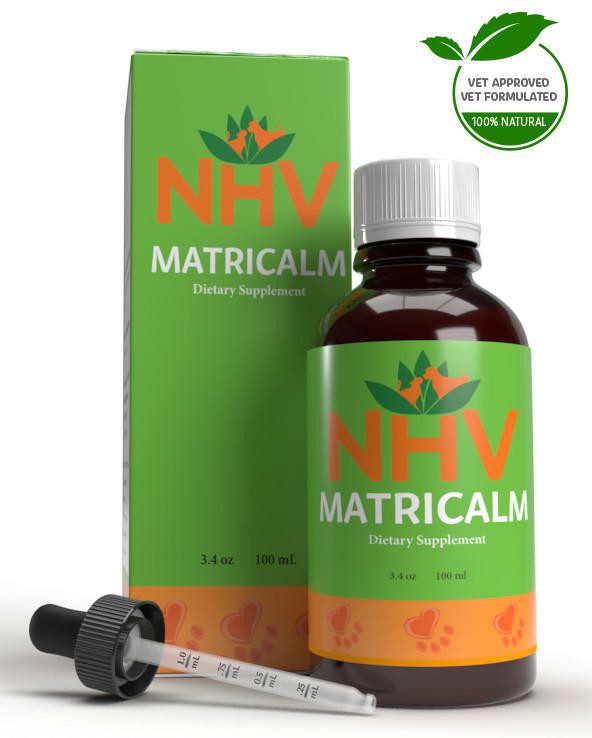
free shipping over $100 (USA & Canada)
1-877-937-4372 the pet expert hotline

All Clear Ointment & First Aid Spray. Helps eliminate infection and speed healing. Recommended for minor cuts and wounds.

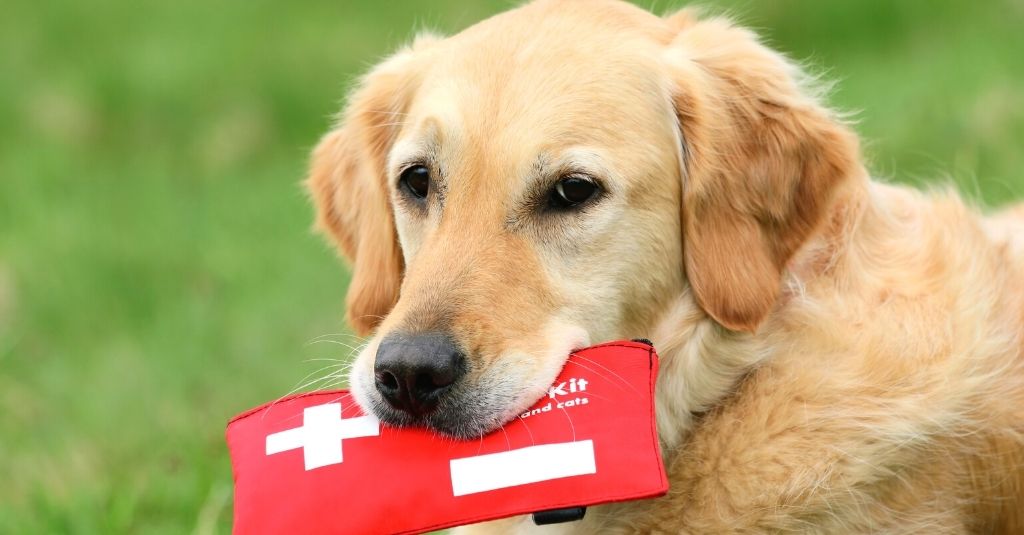
Are you prepared for a pet emergency? Most households have a first-aid kit for humans and a basic understanding of human first aid but are unaware of what to do in pet emergencies. In Honor of American Red Cross Pet First Aid Awareness Month, we want to do our part in informing pet parents on what to do in pet emergencies.
Having a pet first aid kit is essential as you will be able to provide basic care at the emergency scene; however, it is not a substitute for proper veterinary care. If your cat or dog is experiencing an emergency, please take them to your regular veterinarian or emergency veterinary hospital as soon as possible. It’s also important to remember that any animal in discomfort may bite or scratch—be sure to take the appropriate actions to ensure your own safety.
To be prepared for everyday emergencies, NHV’s cut and wound care kit is a great addition to any pet pawrents medicine cabinet. Containing First Aid Spray and All Clear ointment, it is perfect for many different injuries.
When transporting your cat or dog, minimize the motion of their head, neck, and spine.
NOT BREATHING – Your pet may not be breathing, and mouth-to-nose resuscitation and chest compressions may need to be performed. Instruction on mouth-to-nose resuscitation may be available in your area or provided at your local veterinary care facility.
A quick overview of mouth-to-nose resuscitation is when you close your pet’s mouth; place your lips over your pet’s nostrils and give 3 to 4 strong breaths. If your pet is still not breathing on their own, breathe for them 10-12 times per minute. If you cannot detect a heartbeat, perform 5 chest compression to 1 quick breath.
BLEEDING – If possible elevate the area of trauma. Apply pressure to the wound; apply a firm (not tight) bandage, washcloth, or towel. If the original bandage or towel becomes soaked with blood, do not remove it; place additional material on top and continue applying pressure.
Emergencies are stressful for your cat or dog, and further at-home care is often needed. To help with the emotional stress of your pet post-emergency, we recommend NHV Matricalm, which contains ingredients like chamomile and lemon balm to calm the nerves and soothe anxiety. If your pet has gone through an emergency and you would like to incorporate other natural care supplements for their recovery, please do call us. Each situation is different, and we would like to offer you specific advice to aid in your pet’s recovery.
Sources
1. Kahn, CM (Ed.) (2007). The Merck Manual for Pet Health: Home Edition. New Jersey: Merck & Co., Inc.
2. Pet First Aid Tips for Owners (2015). Retrieved from http://www.redcross.org/news/article/April-Is-Pet-First-Aid-Awareness-Month
3. Emergency Care (2015). Retrieved from https://www.aspca.org/pet-care/dog-care/emergency-care
anxiety & aggression support

Support for Anxiety and Aggressive Behavior
buy 2 and save $3
3 month supply for a small to medium size pet
What is it?
NHV Matricalm is a supplement for relaxing nervousness and aggressive behavior in canines through herbal ingredients.
How Does it Work?
Why Should I Trust It?
Formulated with all-natural ingredients by expert veterinarians.

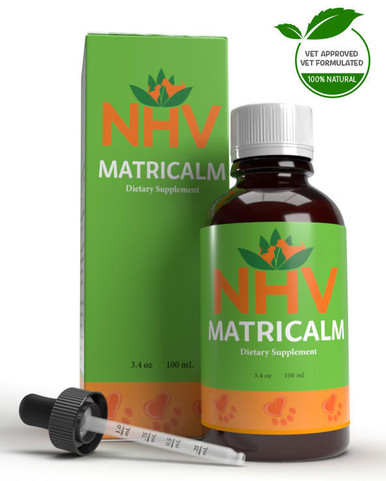
What is it?
NHV Matricalm is a supplement for relaxing nervousness and aggressive behavior in canines through herbal ingredients.
How Does it Work?
Why Should I Trust It?
Formulated with all-natural ingredients by expert veterinarians.

A Calming Supplement for Dogs
Dogs can become anxious or aggressive when exposed to other animals or to people they are unfamiliar with. Separation from an owner or a move to a new home can also trigger troubling symptoms including excessive barking, chewing, and inappropriate urination. A calming dog supplement can help your pet through these situations.
How Matricalm Calms Your Dog
Matricalm is formulated with powerful, natural ingredients that will help put your dog at ease. Ingredients like Chamomile, Passion Flower, and Hops have non-addictive sedative properties.
Ingredients like Lemon Balm and Valerian are especially helpful in easing anxiety. Your dog will find it easier to behave during times of stress, and may even be more receptive to training.
Use Matricalm to help ease anxiety in your dog, as a supplement for dog aggression, and to help reduce excitability in your pet.
Help Calm Your Dog Naturally
NHV supplements are formulated with all-natural ingredients by expert veterinarians with 20+ years of experience. They’re perfectly fine to take together with prescribed medications. Try Matricalm, the natural calming supplement for dogs, and see the difference it makes for you and your pet.
Chamomile – Contains sedative properties.
Passion Flower – An effective, non-addictive sedative.
Lemon Balm – An aromatic herb used for nervous disorders, excitability, and anxiety.
Valerian – Stops heart palpitations, relaxes spasms, relieves pain, and regulates the nervous system.
Hops – Eases tension and anxiety in pets.
Select your pet's weight to determine the correct dose.
To be taken twice daily. Determine your pet’s weight and then use the easy chart below to determine the correct dose. This is the minimum dosage.
Pet's Weight Dosage
0 - 15 lb = 0.5 ml
16 - 30 lb = 1.0 ml
31 - 45 lb = 1.5 ml
46 - 60 lb = 2.0 ml
61 - 75 lb = 2.5 ml
Over 75 lb = 3.0 ml
How to Administer
Shake well before use.
The easiest method is to use the dropper provide and places the drops into your pet’s food or favorite treat. You can also use the dropper and squirt directly into the pet’s mouth.
Some pets can be finicky, if this occurs consider hiding the drops in foods most pet’s love such as fish, chicken or yogurt or a favorite treat. If your pet only eats dry food then soak a few kibbles at feeding time.
For Best Results
Herbal dietary supplements are beneficial to the health and wellbeing of your pet and are safe for long-term use. Every pet responds to natural herbal supplements differently, therefore it is important to be consistent and administer the product daily. Supplements generally take two to four weeks to take effect, however this will vary from one animal to the next.
Product Storage
All NHV Natural Pet Products are pure herbal extracts and contain no artificial additives, preservatives or coloring. Shelf life after opening is 6 months and must be refrigerated after opening.
Cautions and Contraindications
Do not use Matricalm in pregnant or nursing animals.
Speak to your vet before using our products. A second visit is recommended if your pet’s condition does not improve, or deteriorates after continued use of the supplements.
All information provided by NHV Natural Pet Products is for educational purposes only.
A Calming Supplement for Dogs
Dogs can become anxious or aggressive when exposed to other animals or to people they are unfamiliar with. Separation from an owner or a move to a new home can also trigger troubling symptoms including excessive barking, chewing, and inappropriate urination. A calming dog supplement can help your pet through these situations.
How Matricalm Calms Your Dog
Matricalm is formulated with powerful, natural ingredients that will help put your dog at ease. Ingredients like Chamomile, Passion Flower, and Hops have non-addictive sedative properties.
Ingredients like Lemon Balm and Valerian are especially helpful in easing anxiety. Your dog will find it easier to behave during times of stress, and may even be more receptive to training.
Use Matricalm to help ease anxiety in your dog, as a supplement for dog aggression, and to help reduce excitability in your pet.
Help Calm Your Dog Naturally
NHV supplements are formulated with all-natural ingredients by expert veterinarians with 20+ years of experience. They’re perfectly fine to take together with prescribed medications. Try Matricalm, the natural calming supplement for dogs, and see the difference it makes for you and your pet.
Chamomile – Contains sedative properties.
Passion Flower – An effective, non-addictive sedative.
Lemon Balm – An aromatic herb used for nervous disorders, excitability, and anxiety.
Valerian – Stops heart palpitations, relaxes spasms, relieves pain, and regulates the nervous system.
Hops – Eases tension and anxiety in pets.
Select your pet's weight to determine the correct dose.
To be taken twice daily. Determine your pet’s weight and then use the easy chart below to determine the correct dose. This is the minimum dosage.
Pet's Weight Dosage
0 - 15 lb = 0.5 ml
16 - 30 lb = 1.0 ml
31 - 45 lb = 1.5 ml
46 - 60 lb = 2.0 ml
61 - 75 lb = 2.5 ml
Over 75 lb = 3.0 ml
How to Administer
Shake well before use.
The easiest method is to use the dropper provide and places the drops into your pet’s food or favorite treat. You can also use the dropper and squirt directly into the pet’s mouth.
Some pets can be finicky, if this occurs consider hiding the drops in foods most pet’s love such as fish, chicken or yogurt or a favorite treat. If your pet only eats dry food then soak a few kibbles at feeding time.
For Best Results
Herbal dietary supplements are beneficial to the health and wellbeing of your pet and are safe for long-term use. Every pet responds to natural herbal supplements differently, therefore it is important to be consistent and administer the product daily. Supplements generally take two to four weeks to take effect, however this will vary from one animal to the next.
Product Storage
All NHV Natural Pet Products are pure herbal extracts and contain no artificial additives, preservatives or coloring. Shelf life after opening is 6 months and must be refrigerated after opening.
Cautions and Contraindications
Do not use Matricalm in pregnant or nursing animals.
Speak to your vet before using our products. A second visit is recommended if your pet’s condition does not improve, or deteriorates after continued use of the supplements.
All information provided by NHV Natural Pet Products is for educational purposes only.
cut & wound support
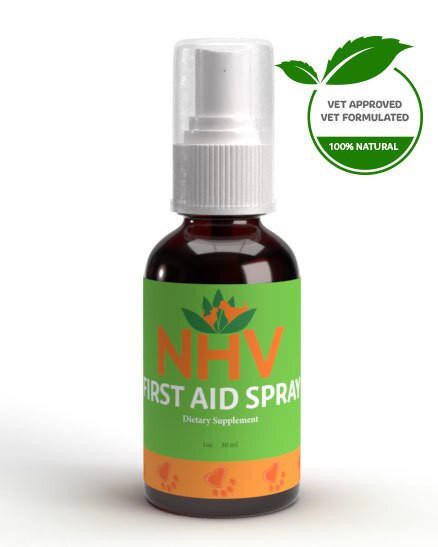
Holistic First Aid for Your Dog’s Wounds
buy 2 and save $3
What is it?
NHV Dog First-Aid Spray is a natural, vet-formulated spray that helps clean and soothe minor cuts and scrapes on dogs, supporting faster healing and reducing the risk of infection.
How Does it Work?
Why Should I Trust It?
All-natural solution formulated by vets.


What is it?
NHV Dog First-Aid Spray is a natural, vet-formulated spray that helps clean and soothe minor cuts and scrapes on dogs, supporting faster healing and reducing the risk of infection.
How Does it Work?
Why Should I Trust It?
All-natural solution formulated by vets.

Healthy play is important for dogs of any age, but sometimes they can get cuts and scrapes, just like people. Having first aid for your dog on hand will help you clean their wound to inhibit infection and jumpstart their healing.
If you’ve got an adventurous pup, chances are that they’ll come back from the yard or park with a cut in their paw or scrape on their nose sooner or later. The best thing you can do is to apply a topical treatment like our first aid spray for dogs to help inhibit infection, and if you’re able, bandage the area to protect it while it heals.
A dog’s injury might not always seem serious at first, but any open injury can be infected if left unattended. A dog could even develop sepsis, a potentially life-threatening condition that calls for urgent medical care.
Because immediate action is the best way to deter infection, minor cuts and scratches should be treated at home as soon as possible. Deep punctures or lacerations, as well as injuries that are already showing signs of pus or infection, will require professional treatment.
NHV’s first aid spray for dog wounds is an excellent topical solution for at-home pet care. This all-natural first aid spray for dogs is formulated with extracts like aloe vera to relieve discomfort and soothe irritated skin during the recovery process so dogs aren’t tempted to lick or scratch their injuries. Our First Aid Spray is also made with extracts like neem and tea tree oil with antibacterial, antifungal, antiviral, and antiseptic properties that are essential to removing initial foreign contagions.
All-natural ingredients make our first aid spray safe to use daily as your dog recovers.
NHV’s pet products make providing wound support for your pet safe and easy thanks to its plant-based ingredients.
Do not try to treat serious wounds or punctures at home. Contact a veterinary professional if your dog sustains a serious cut or injury.
Neem – Contains antibacterial and antiviral properties to boost healing
Marigold – Contains essential oils and other compounds that encourage cell reproduction while also preventing bacterial and fungal infections
Aloe Vera – Softens and soothes irritated skin and boosts healing
Usnea – Has antibacterial properties and prevents infection
California Poppy – Relieves discomfort and prevents infection
Tea Tree Oil – Contains antiseptic properties and boosts healing
How to Administer
Topical Spray: Spray several times a day to affected area until healed.
It may some times be necessary to shave or trim your pet’s hair so that the First Aid spray reaches the affected area. If necessary, cover the affected area with gauze dressing.
Caution
Do not spray near or into eyes or nose. May initially sting on open cut
Healthy play is important for dogs of any age, but sometimes they can get cuts and scrapes, just like people. Having first aid for your dog on hand will help you clean their wound to inhibit infection and jumpstart their healing.
If you’ve got an adventurous pup, chances are that they’ll come back from the yard or park with a cut in their paw or scrape on their nose sooner or later. The best thing you can do is to apply a topical treatment like our first aid spray for dogs to help inhibit infection, and if you’re able, bandage the area to protect it while it heals.
A dog’s injury might not always seem serious at first, but any open injury can be infected if left unattended. A dog could even develop sepsis, a potentially life-threatening condition that calls for urgent medical care.
Because immediate action is the best way to deter infection, minor cuts and scratches should be treated at home as soon as possible. Deep punctures or lacerations, as well as injuries that are already showing signs of pus or infection, will require professional treatment.
NHV’s first aid spray for dog wounds is an excellent topical solution for at-home pet care. This all-natural first aid spray for dogs is formulated with extracts like aloe vera to relieve discomfort and soothe irritated skin during the recovery process so dogs aren’t tempted to lick or scratch their injuries. Our First Aid Spray is also made with extracts like neem and tea tree oil with antibacterial, antifungal, antiviral, and antiseptic properties that are essential to removing initial foreign contagions.
All-natural ingredients make our first aid spray safe to use daily as your dog recovers.
NHV’s pet products make providing wound support for your pet safe and easy thanks to its plant-based ingredients.
Do not try to treat serious wounds or punctures at home. Contact a veterinary professional if your dog sustains a serious cut or injury.
Neem – Contains antibacterial and antiviral properties to boost healing
Marigold – Contains essential oils and other compounds that encourage cell reproduction while also preventing bacterial and fungal infections
Aloe Vera – Softens and soothes irritated skin and boosts healing
Usnea – Has antibacterial properties and prevents infection
California Poppy – Relieves discomfort and prevents infection
Tea Tree Oil – Contains antiseptic properties and boosts healing
How to Administer
Topical Spray: Spray several times a day to affected area until healed.
It may some times be necessary to shave or trim your pet’s hair so that the First Aid spray reaches the affected area. If necessary, cover the affected area with gauze dressing.
Caution
Do not spray near or into eyes or nose. May initially sting on open cut
constipation support
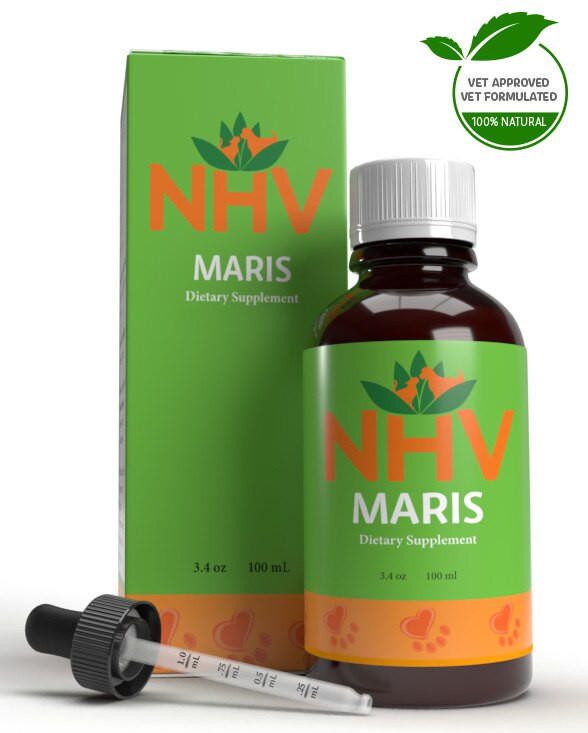
Holistic Canine Constipation Support
buy 2 and save $3
3 month supply for a small to medium size pet
What is it?
Maris is a natural dog constipation support that helps to promote regular bowel movements and softer stools. It may help relieve digestive congestion, inflammation and support healthy elimination.
How Does it Work?
Why Should I Trust It?
Natural remedy formulated and approved by vets.

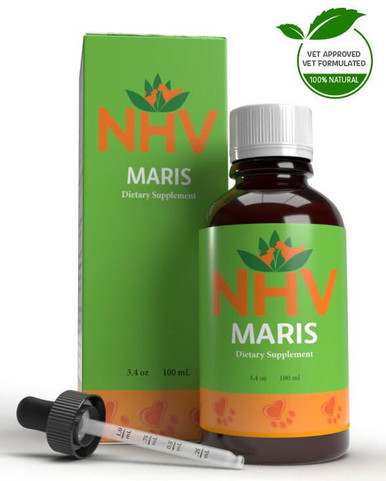
What is it?
Maris is a natural dog constipation support that helps to promote regular bowel movements and softer stools. It may help relieve digestive congestion, inflammation and support healthy elimination.
How Does it Work?
Why Should I Trust It?
Natural remedy formulated and approved by vets.

Natural Constipation Support for Dogs
Is your dog having difficulty pooping or there’s no poop at all? Besides straining and painful or difficult defecation, if you realize your pup is showing signs like hard, dry small stools, lethargy, loss of appetite, hunched posture or vomiting for more than two days, you should consider taking them to see your trusted vet to run some tests to figure out the underlying cause. Your vet will be able to check the consistency of the stools through a physical examination and get an idea of how advanced the constipation is. Further exams like lab tests, endoscopy, and image exams like X-rays and ultrasounds might be required to rule out other conditions like tumors in the GI tract, for instance. Musculoskeletal disorders, neurological conditions, and diseases in the urinary tract also need to be ruled out since they can be the primary causes of constipation.
Constipation is a very serious symptom. It is important to keep in mind that chronic constipation can lead to more complicated issues like obstipation and megacolon. Obstipation happens when fecal matter becomes chronically compacted, and your furkiddo can't poop at all. Megacolon happens when the colon loses its normal motility and ability to eliminate waste normally. Obstipation and megacolon are complex health issues and may require manual or surgical removal by your trusted vet. The treatment for constipation will depend on the underlying cause, its severity and its duration.
For acute constipation or constipation that tends to recur, we'd suggest adding a natural dog constipation support remedy like NHV Maris to your pup’s daily meals. Maris’ gentle formulation means that you can safely increase the dosage on days that your pet needs the extra support. NHV Maris for dog constipation can safely be used short-term as well as long-term as natural health support. Maris promotes soft stools and may help improve colon health in puppies (vaccinated and weaned), as well as adult dogs.
How NHV’s Natural Dog Constipation Remedy Eases Constipation
Constipation can cause a lot of discomfort for your little one. Ingredients like Cascara Sagrada and Ginger can improve intestinal muscle tone, reduce muscle cramping during bowel movements and relieve nausea. The laxative properties in Maris create softer stool, which also makes bowel movements easier and reduces straining. Herbs like Dandelion promote healthy movement through the colon by stimulating bile flow while Marshmallow soothes and lubricates irritated digestive tissues.
Causes for Constipation in Dogs
There are many different causes for constipation such as:
Get Your Dog On The Road To Recovery With NHV Supplements
Part of being a pet parent is keeping your companion safe and comfortable. When it comes to natural dog constipation remedies, we only use the best ingredients to make a gentle yet effective formulation that is safe to use on all dogs. NHV Natural Pet Products are 100% natural, and their liquid formulations make them easy to hide in food. For any questions or concerns about your little one’s unique needs, contact us by live chat, email or phone with the button below.
Made with the finest, organically grown, or ethically harvested herbs. Made specifically for pets, vet-formulated and vet approved.
Select your pet's weight to determine the correct dose.
To be taken twice daily. Determine your pet’s weight and then use the easy chart below to determine the correct dose. This is the minimum dosage.
Pet's Weight Dosage
0 - 15 lb = 0.5 ml
16 - 30 lb = 1.0 ml
31 - 45 lb = 1.5 ml
46 - 60 lb = 2.0 ml
61 - 75 lb = 2.5 ml
Over 75 lb = 3.0 ml
How to Administer
Shake well before use. The easiest method is to use the dropper provide and place the drops into your pet’s food or favorite treat. You can also use the dropper and squirt directly into the pet’s mouth.
Some pets can be finicky, if this occurs consider hiding the drops in foods most pet’s love such as fish, chicken or yogurt or a favorite treat. If your pet only eats dry food then soak a few kibbles at feeding time.
For Best Results
Herbal dietary supplements are beneficial to the health and wellbeing of your pet and are safe for long-term use. Every pet responds to natural herbal supplements differently, therefore it is important to be consistent and administer the product daily. Supplements generally take two to four weeks to take effect, however this will vary from one animal to the next.
Product Storage
All NHV Natural Pet Products are pure herbal extracts and contain no artificial additives, preservatives or coloring. Shelf life after opening is 6 months and must be refrigerated after opening.
Cautions and Contraindications
Do not use Maris in pregnant or nursing animals. Do not use with intestinal obstructions. Speak to your vet before using our products. A second visit is recommended if your pet’s condition does not improve, or deteriorates after continued use of the supplements.
All information provided by NHV Natural Pet Products is for educational purposes only.
Natural Constipation Support for Dogs
Is your dog having difficulty pooping or there’s no poop at all? Besides straining and painful or difficult defecation, if you realize your pup is showing signs like hard, dry small stools, lethargy, loss of appetite, hunched posture or vomiting for more than two days, you should consider taking them to see your trusted vet to run some tests to figure out the underlying cause. Your vet will be able to check the consistency of the stools through a physical examination and get an idea of how advanced the constipation is. Further exams like lab tests, endoscopy, and image exams like X-rays and ultrasounds might be required to rule out other conditions like tumors in the GI tract, for instance. Musculoskeletal disorders, neurological conditions, and diseases in the urinary tract also need to be ruled out since they can be the primary causes of constipation.
Constipation is a very serious symptom. It is important to keep in mind that chronic constipation can lead to more complicated issues like obstipation and megacolon. Obstipation happens when fecal matter becomes chronically compacted, and your furkiddo can't poop at all. Megacolon happens when the colon loses its normal motility and ability to eliminate waste normally. Obstipation and megacolon are complex health issues and may require manual or surgical removal by your trusted vet. The treatment for constipation will depend on the underlying cause, its severity and its duration.
For acute constipation or constipation that tends to recur, we'd suggest adding a natural dog constipation support remedy like NHV Maris to your pup’s daily meals. Maris’ gentle formulation means that you can safely increase the dosage on days that your pet needs the extra support. NHV Maris for dog constipation can safely be used short-term as well as long-term as natural health support. Maris promotes soft stools and may help improve colon health in puppies (vaccinated and weaned), as well as adult dogs.
How NHV’s Natural Dog Constipation Remedy Eases Constipation
Constipation can cause a lot of discomfort for your little one. Ingredients like Cascara Sagrada and Ginger can improve intestinal muscle tone, reduce muscle cramping during bowel movements and relieve nausea. The laxative properties in Maris create softer stool, which also makes bowel movements easier and reduces straining. Herbs like Dandelion promote healthy movement through the colon by stimulating bile flow while Marshmallow soothes and lubricates irritated digestive tissues.
Causes for Constipation in Dogs
There are many different causes for constipation such as:
Get Your Dog On The Road To Recovery With NHV Supplements
Part of being a pet parent is keeping your companion safe and comfortable. When it comes to natural dog constipation remedies, we only use the best ingredients to make a gentle yet effective formulation that is safe to use on all dogs. NHV Natural Pet Products are 100% natural, and their liquid formulations make them easy to hide in food. For any questions or concerns about your little one’s unique needs, contact us by live chat, email or phone with the button below.
Made with the finest, organically grown, or ethically harvested herbs. Made specifically for pets, vet-formulated and vet approved.
Select your pet's weight to determine the correct dose.
To be taken twice daily. Determine your pet’s weight and then use the easy chart below to determine the correct dose. This is the minimum dosage.
Pet's Weight Dosage
0 - 15 lb = 0.5 ml
16 - 30 lb = 1.0 ml
31 - 45 lb = 1.5 ml
46 - 60 lb = 2.0 ml
61 - 75 lb = 2.5 ml
Over 75 lb = 3.0 ml
How to Administer
Shake well before use. The easiest method is to use the dropper provide and place the drops into your pet’s food or favorite treat. You can also use the dropper and squirt directly into the pet’s mouth.
Some pets can be finicky, if this occurs consider hiding the drops in foods most pet’s love such as fish, chicken or yogurt or a favorite treat. If your pet only eats dry food then soak a few kibbles at feeding time.
For Best Results
Herbal dietary supplements are beneficial to the health and wellbeing of your pet and are safe for long-term use. Every pet responds to natural herbal supplements differently, therefore it is important to be consistent and administer the product daily. Supplements generally take two to four weeks to take effect, however this will vary from one animal to the next.
Product Storage
All NHV Natural Pet Products are pure herbal extracts and contain no artificial additives, preservatives or coloring. Shelf life after opening is 6 months and must be refrigerated after opening.
Cautions and Contraindications
Do not use Maris in pregnant or nursing animals. Do not use with intestinal obstructions. Speak to your vet before using our products. A second visit is recommended if your pet’s condition does not improve, or deteriorates after continued use of the supplements.
All information provided by NHV Natural Pet Products is for educational purposes only.
Published: April 4, 2015